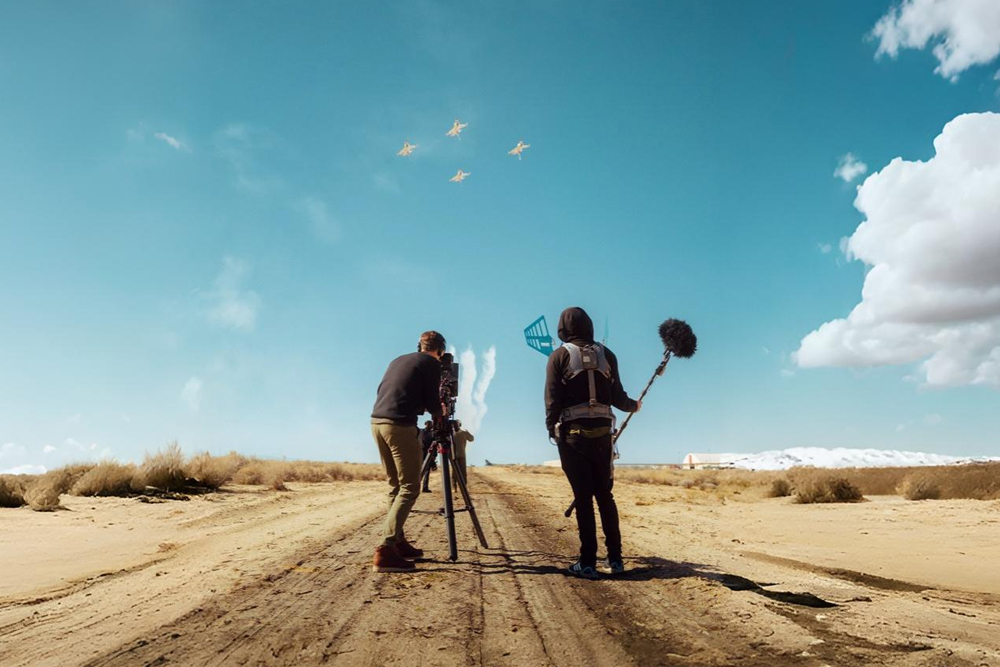
For Jebari Dean, it was the intersection of technology and creativity that sparked his journey into production sound. Based in Portland, the audiophile began with a passion for music and handcrafting guitars—an interest that evolved into a multi-decade career capturing sound for film, television, documentaries, commercials, and corporate productions. “I was in the sound realm in some form or another for a while and then my brother got into filmmaking and photography, so we divided and conquered,” admits Dean. “That’s when I really started learning about production sound, spending hours on JW Sound and other forums. It made me realize how much I really enjoyed it, and eventually, I got good at it.”
One of Dean’s latest projects, Air Force Elite: Thunderbirds, is a soaring Netflix documentary that captures the intensity, precision, and pressure as a handpicked group of U.S. Air Force pilots push themselves to the limit in pursuit of a coveted spot on the legendary Thunderbirds team—flying the iconic F-16 Fighting Falcons. “With Thunderbirds, it was an interesting project from a sound perspective and a great experience to be in environments that you’re never going to experience any other way,” says Dean, who landed the gig through a working relationship with its director Matt Wilcox.
Production was given near-unrestricted access to document the pilots, airmen, and support crews as they prepared for the 2023 season. With just around 60 days to perfect their precision flying, the Thunderbirds train relentlessly to earn certification from the acting Air Combat Command commander before embarking on their national tour. Among the signature formations showcasing their razor-sharp skill are the Delta, Diamond, and the risky High Bomb Burst, where jets climb skyward, cross paths at breakneck speed, and snapping back in perfect formation. Dean looked to Zaxcom to record the edge-of-your-seat action, including the Nova mixer-recorder, Aria Control Surface, and a bevy of Zaxcom Digital Recording Wireless. ZMT4, ZMT3, and TRX743 transmitters were paired with MRX414 receivers, which can conveniently slide into the rear of the Nova, saving space in any bag or cart setup. On set, the production mixer uses a custom cart or bag rig built around his Zaxcom gear.
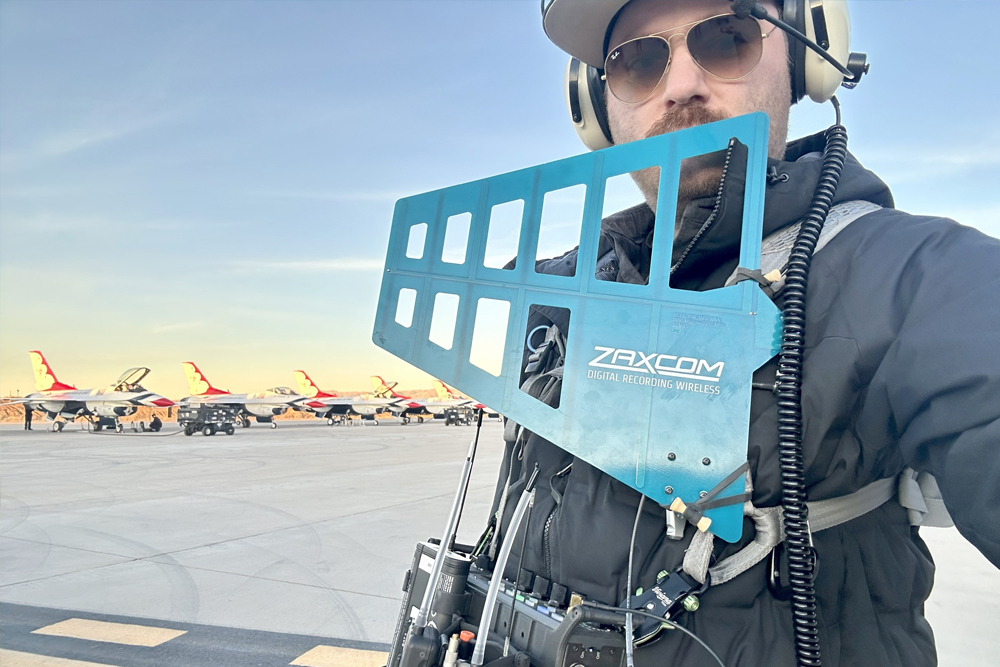
Early on, coverage leaned into a fly by the seat of your pants approach. “We basically all loaded up way too many Pelican cases in an airplane and flew down to Spaceport, New Mexico in January,” says Dean. “We didn’t know what to expect when we first arrived, so we just started shooting. We filmed the briefings before and after every flight, we followed around pilots, filmed the maintenance crew, and shot the jets and flight line. There’s a lot of staff and crew, about 130 people on the team, so we had to be ready for anything.”
The documentary centers on six Thunderbird pilots, led by Lieutenant Colonel Justin “Astro” Elliott, as he guides the team through their intense preparation. Growing up, Elliott dreamed of becoming an astronaut, but during the selection process, he was offered command of the Thunderbirds, a call he couldn’t ignore. Filmmakers dive into the weight of that decision, revealing his life off the runway with his wife and two children. As production settled into the rhythm of the squadron’s daily routine, the crew sharpened their focus, using candid briefing room moments and in-depth interviews to weave together a compelling, human-driven narrative. Dean adjusted his routine accordingly. “We started micing the 6 pilots with ZMT4 transmitters and DPA lavs and I placed two Sennheiser MKH 50s in the briefing room ceiling as a backup to cover any other people who happened to be in the room. The ceiling mics weren’t as effective and the DPA lavs were sounding really good, so we dropped that approach towards the end.”
During one briefing room sequence, which didn’t make the final cut, sound had to wire 14 individuals. Two other production mixers were brought in for the additional coverage. “I ended up with two MRX414 receivers in my Nova giving me 8 channels. Rado Sefanov brought in a second Nova and we hardwired them via timecode and sent a mix out of the second Nova into my primary Nova for the main mix track,” explains Dean. “Camera sync and frequency setup were a breeze with the Nova scan and pick feature. And being able to easily re-freq everything with one button is one of my favorite features about the Zaxcom ecosystem and it worked flawlessly.”
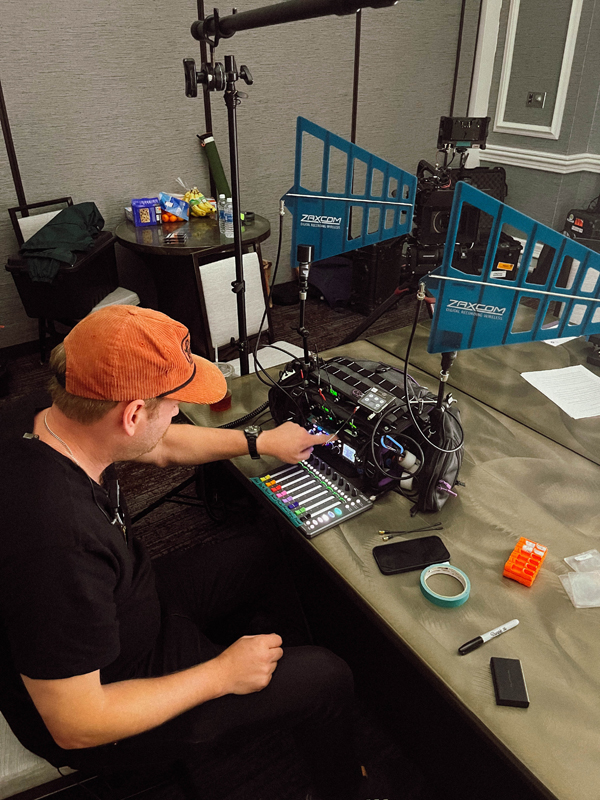

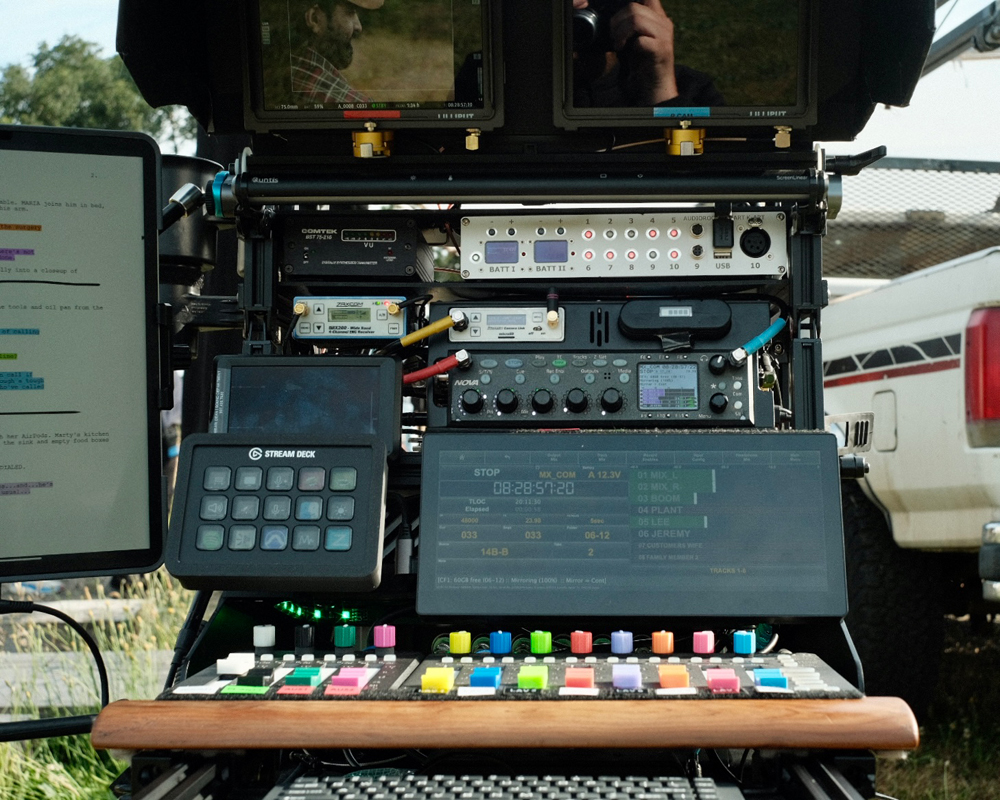
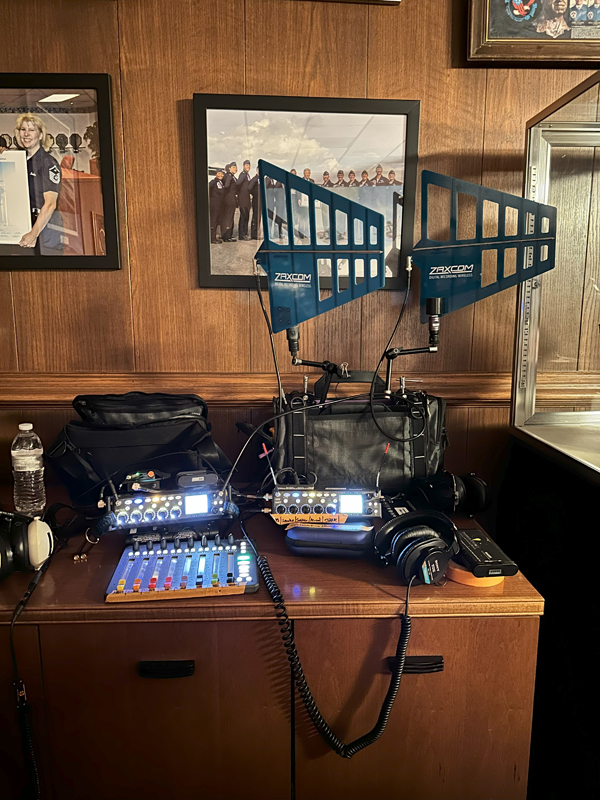

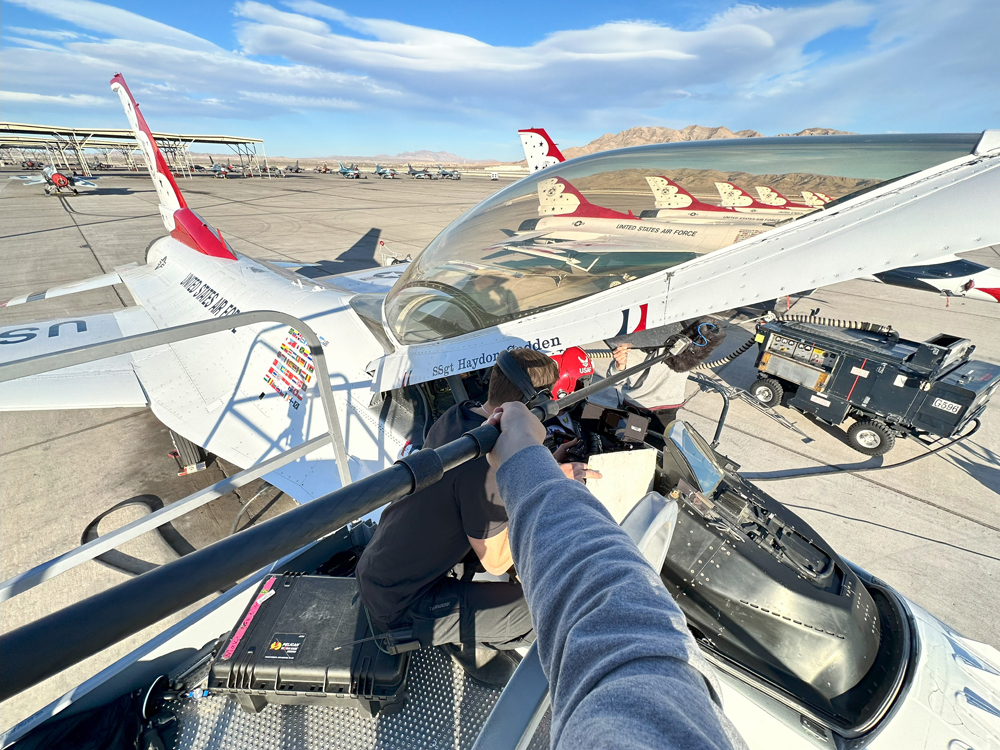
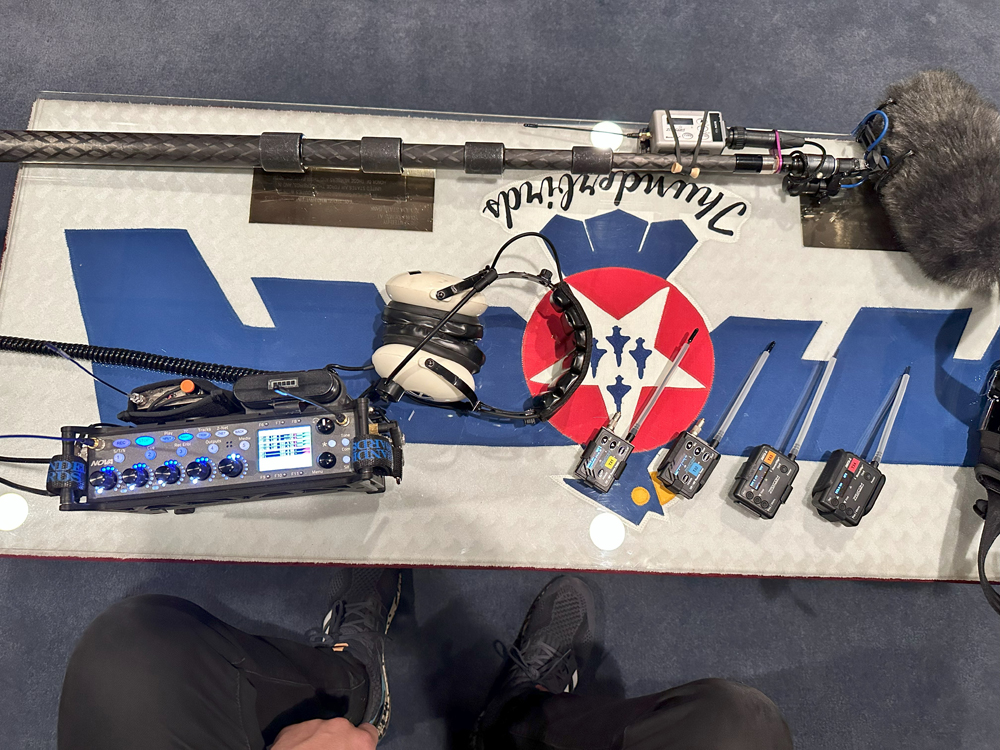
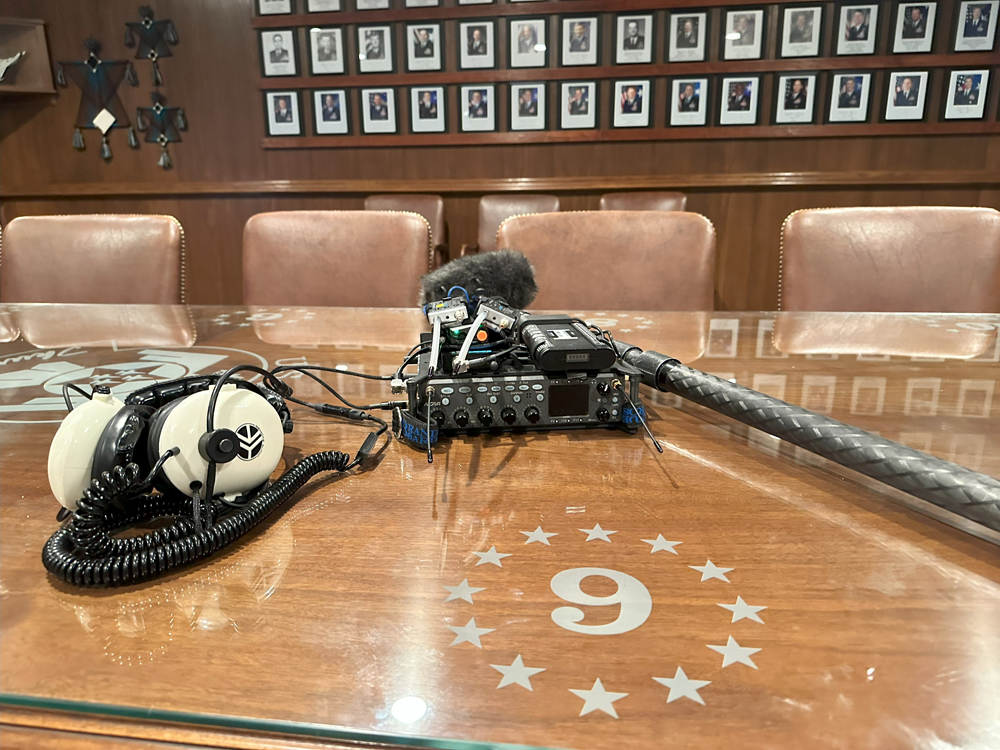
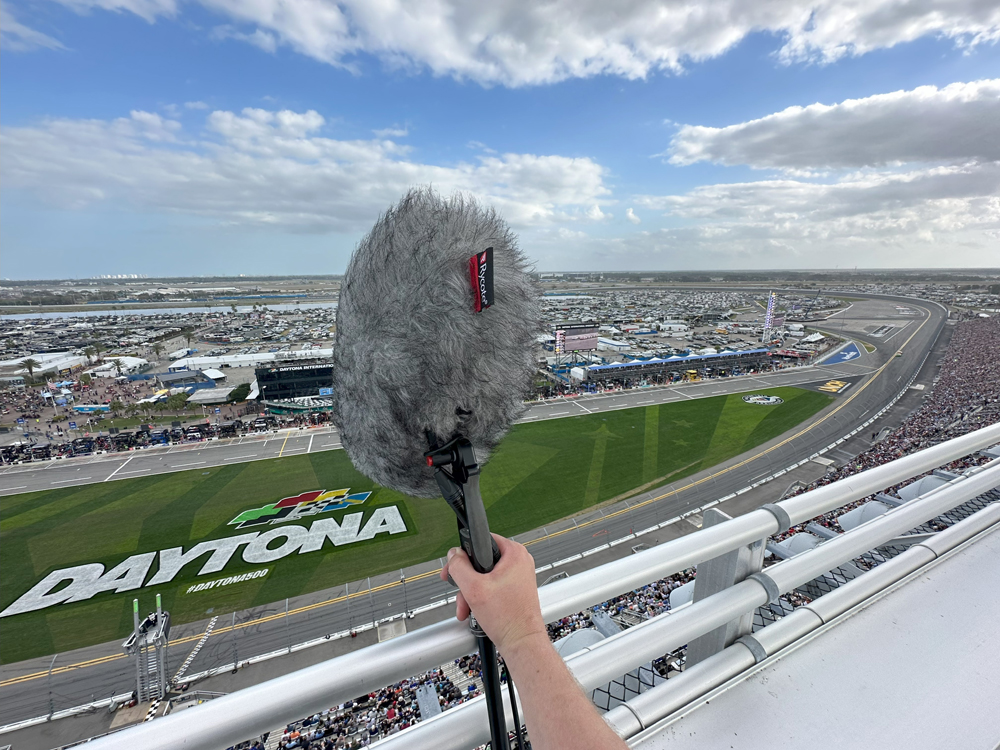
Production used ARRI Alexa LF and Alexa Mini cameras which were synced via Tentacle Sync units but Dean later changed them out for Besto TCX-2+ units. “I love their ability to always jam wirelessly, and paired with their slates, it’s a really slick system to compliment the Nova. My Nova was continuously jammed by a master box as well and all the cameras were running a sync box. We ended up not running any hops but we never ever received any complaints from post.” For IFB, he utilized a slightly different setup for the Thunderbirds production but since moved to a Zaxcom TRXCL Camera Link transmitter and URX system for camera feeds and interpersonal communications with the sound team. He also has a set of VRX1 IFB audio receivers, which operate on the VHF band, for crew. “I’m very happy moving to a digital system, and the convenience of the built-in VTX1 on the Nova makes it more powerful and the workflow more streamlined.”
While at Spaceport, Dean recorded a substantial amount of sound effects. In doing so, he wired a MS rig with a Sennheiser MKH50/30 pair and an additional wired Sennheiser MKH 416 into the Nova. “It was really cool to dedicate a couple of full practice sessions to gathering as many sound effects for post as we were able to. I’m not sure how much made it into the final mix, but our director Matt was editing all of it from the start.”
Two Zaxcom features aided in the mixer’s workflow and approach. “Being an unscripted doc, I was using the Nova automix feature and essentially doing an ‘assisted auto mix’ which was really helpful especially for the briefing rooms where we had six or more wires running. It allowed me to deliver a clean mix track in a documentary setting like this,” notes Dean. “I later heard from Matt that the folks at Skywalker Sound, who did the post sound, were really happy with the on-set mix and a lot of that ended up in the film. It’s always been a bucket list item for me having it mixed at Skywalker, and having it all work out was really cool.”
The other feature was the use of internal recording settings on Zaxcom transmitters which allows audio to be wirelessly transmitted while being simultaneously recorded onto a memory card. “I had my internal recording on by default so we were ready for anything,” notes Dean. “I had my BlueFin antennae to maximize the wireless range but it’s nice to know we were covered in case of a dropout. It saves you so much stress knowing that you have it on the transmitters.”
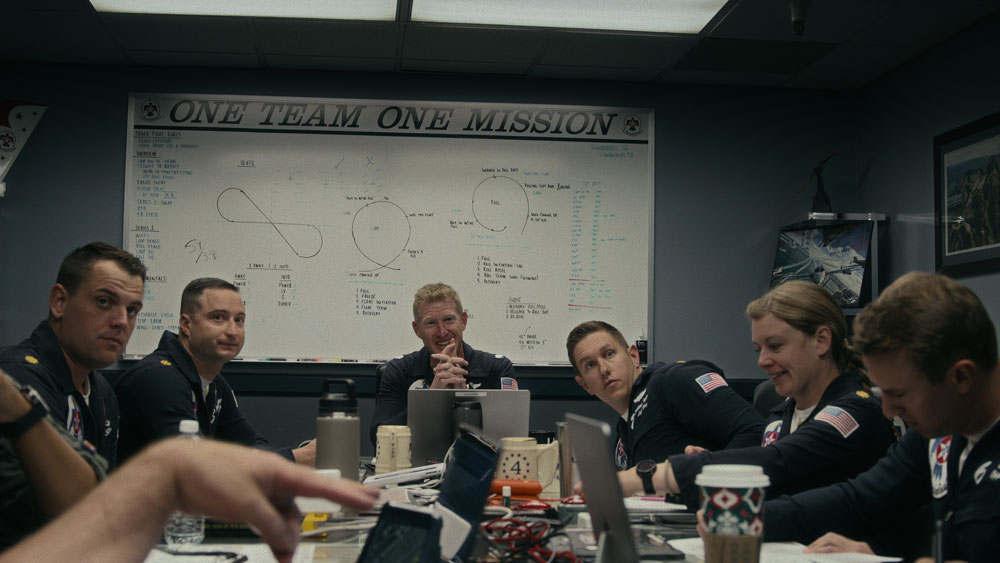
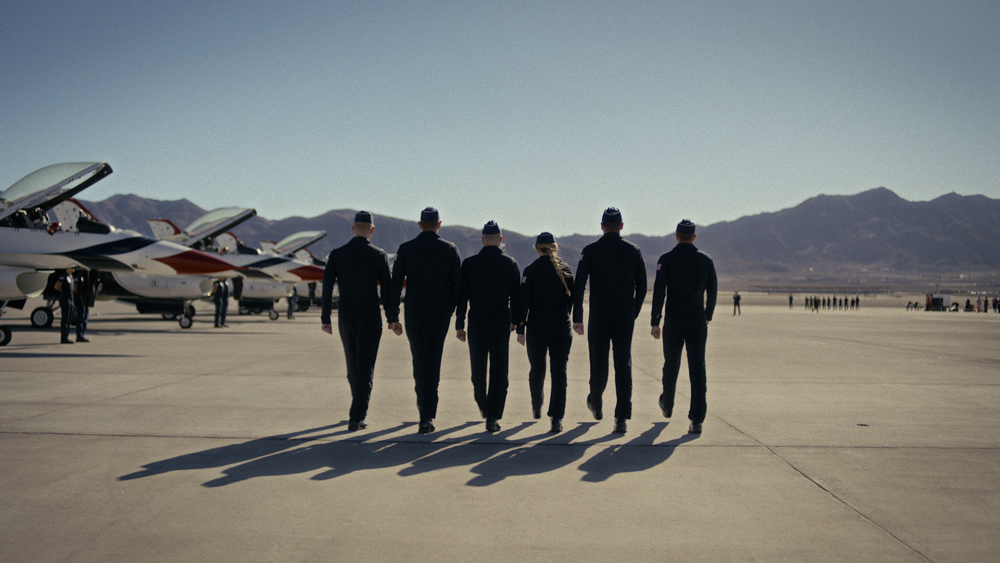
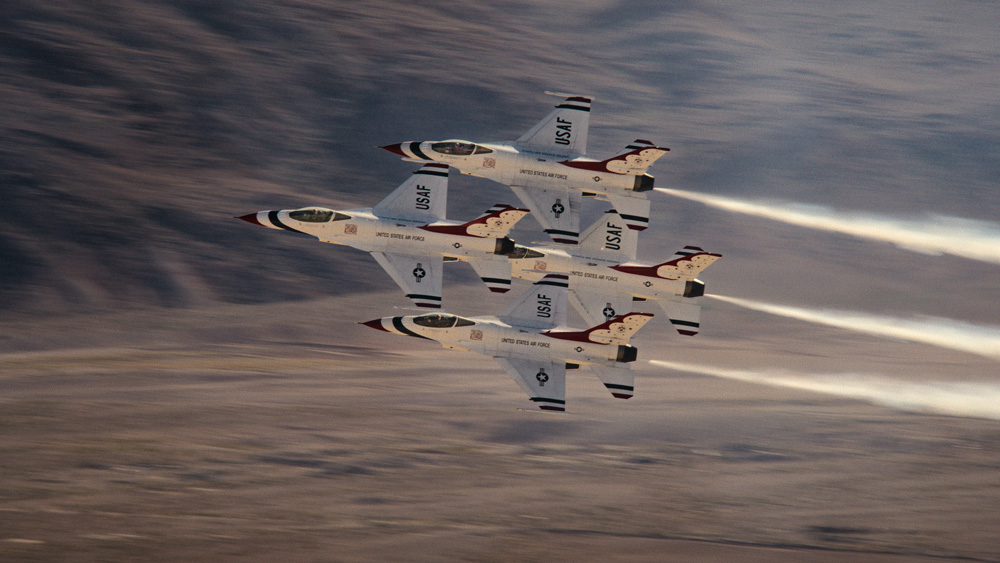
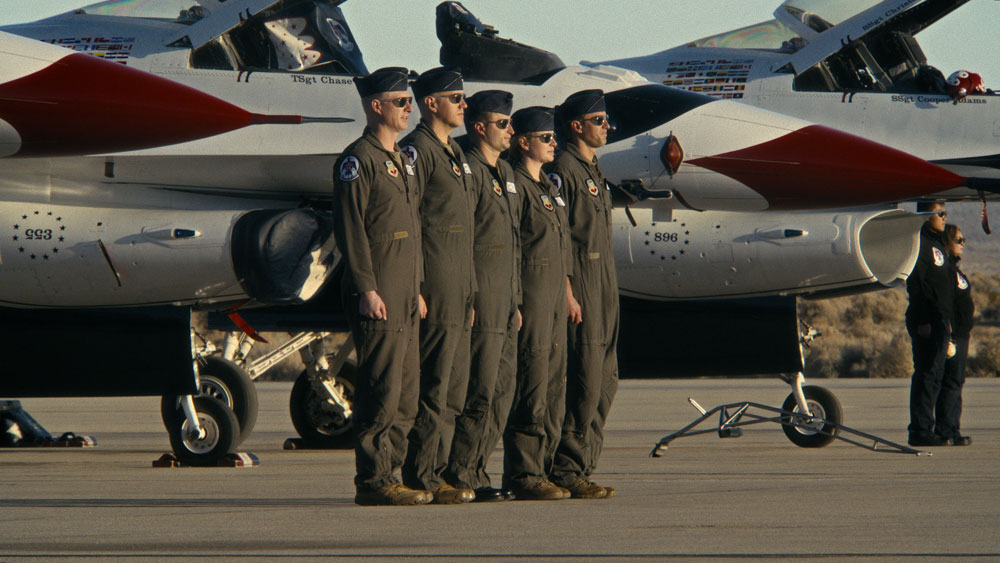
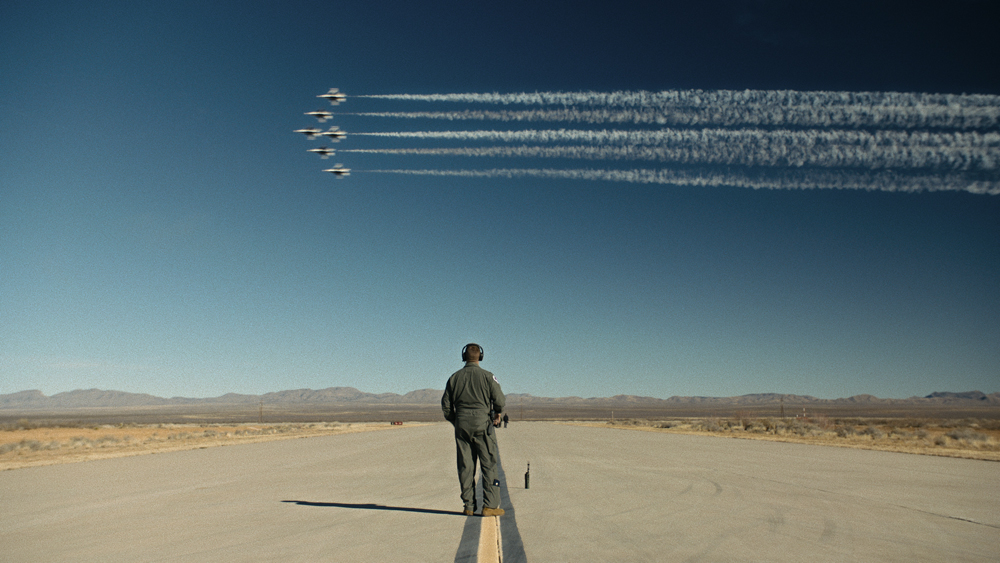
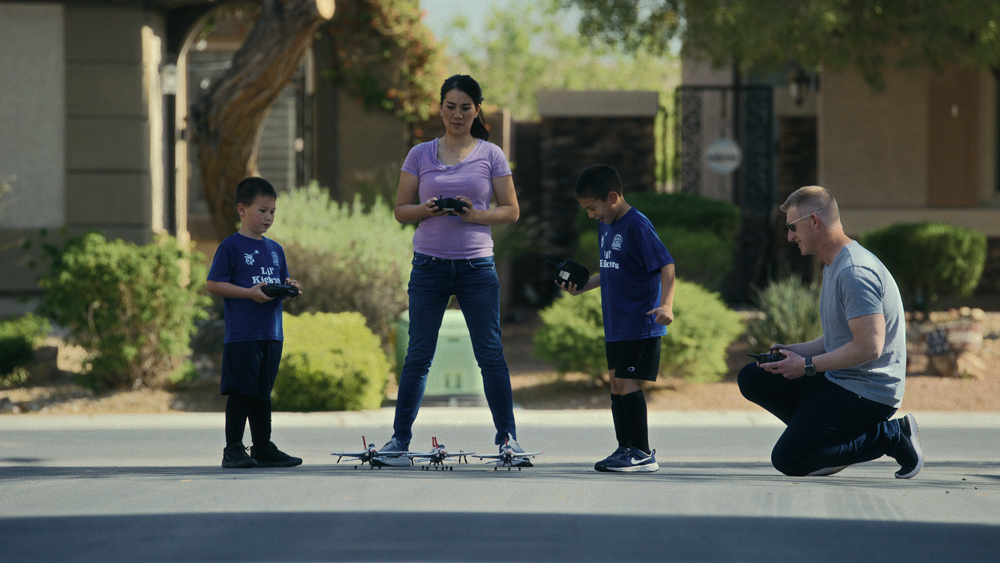
The documentary puts viewers inside the cockpit of an F-16, capturing the intense training that leads up to the certification process. Audiences hear real-time conversations between pilots and ground crew, offering a rare behind-the-scenes perspective. Audio from the aircraft communications was recorded by GoPros mounted on the inside. Dean also took a secondary approach to record the communications. “We were shooting at the Naval Air Facility El Centro, practicing at the Blue Angels facility and there were people parked on this road at the end of the runway watching. And I heard the comms and it struck me that someone had a scanner tuned in,” he says. “I assumed it would have been encrypted but it wasn’t, so I bought a Uniden scanner and asked one of the officers for the frequencies. I plugged them in and just had it running in my bag.”
In one standout scene, the Thunderbirds execute a flyover at the Daytona 500, timed precisely to a single lyric in the National Anthem, leaving no margin for error. Dean brought in production mixer Josh Harris to cover the event which had at least five cameras running at any given time. “We scouted the location the day before the race and recorded the brief before the show. Then on race day, we did our own frequency scans,” he notes. “That’s another thing that makes Zaxcom and ZaxNet great because you can just scan and select on the fly, so if something did come up, I can change all the frequencies on the transmitters without going up to the talent.” During the National Anthem, Dean and the Thunderbirds personnel were positioned on the roof to coordinate the approaching F-16s. The production mixer wired all the ground talent with ZMT4 transmitters and DPA 4063 or 6061 lavs. He additionally incorporated an MS rig to record the flyover and the race cars, which he admits “were arguably louder than the F-16s.”
Besides recording production sound, Dean also works as a post sound editor and rerecording mixer, at times, finishing his own production recordings. “Initially, I started doing small projects but it has grown over the years,” he says. “It’s nice to shake things up and keep you fresh, but it’s also really valuable to understand how post works and how that translates to what we can do in the field.” When asked about any advice he can share for others looking to do both, he said, “I think in general having another perspective on something is always helpful. Learning the software and tools is a great way to start, but mostly, it’s about developing your ear. And you need to do that by getting a bunch of projects under your belt. So say yes to as many things as you can early on and you will begin to feel more confident with a post mix.”
You can keep up or connect with Jebari Dean at his website here.
Along with Jebari Dean, the names credited as a production mixer were, Tim brown III, Tiernan Turner, Jaime Cervantes, Ben Devine, Johnny Buell, Joe Harris, Stefanov Radoslav, Jared Payzant, Timothy Vannette, Lincoln Terhark, Chris Burns, and Prahlad Strickland. These mixers helped record the sound locally for the Thunderbirds nationwide tour as they visited 62 different cities over 200+ days.